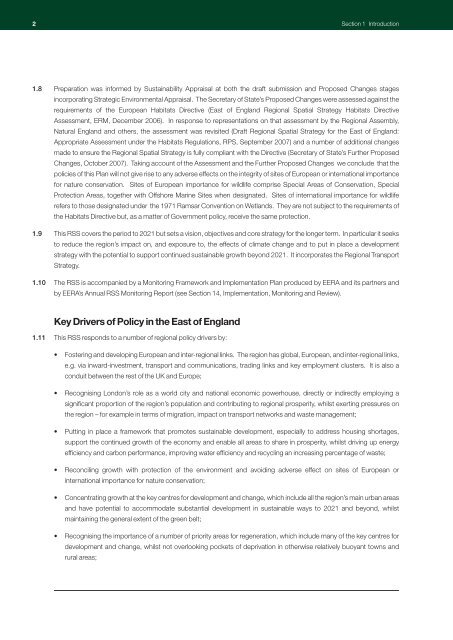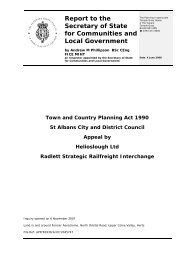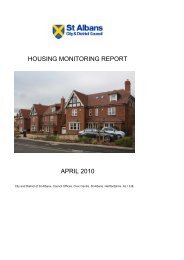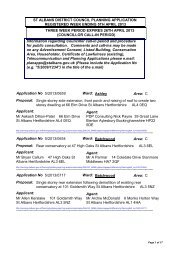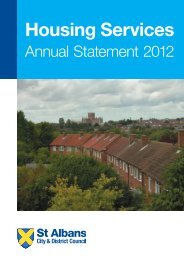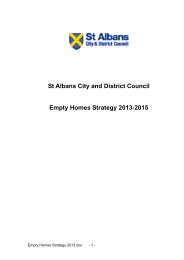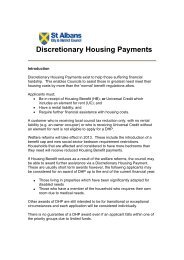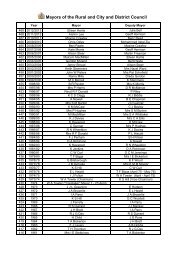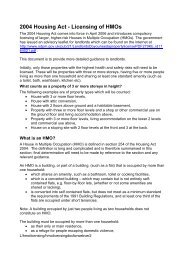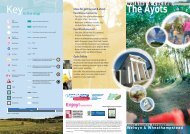RSS East Of England Plan - Broads Authority
RSS East Of England Plan - Broads Authority
RSS East Of England Plan - Broads Authority
You also want an ePaper? Increase the reach of your titles
YUMPU automatically turns print PDFs into web optimized ePapers that Google loves.
2 Section 1 Introduction<br />
1.8 Preparation was informed by Sustainability Appraisal at both the draft submission and Proposed Changes stages<br />
incorporating Strategic Environmental Appraisal. The Secretary of State’s Proposed Changes were assessed against the<br />
requirements of the European Habitats Directive (<strong>East</strong> of <strong>England</strong> Regional Spatial Strategy Habitats Directive<br />
Assessment, ERM, December 2006). In response to representations on that assessment by the Regional Assembly,<br />
Natural <strong>England</strong> and others, the assessment was revisited (Draft Regional Spatial Strategy for the <strong>East</strong> of <strong>England</strong>:<br />
Appropriate Assessment under the Habitats Regulations, RPS, September 2007) and a number of additional changes<br />
made to ensure the Regional Spatial Strategy is fully compliant with the Directive (Secretary of State’s Further Proposed<br />
Changes, October 2007). Taking account of the Assessment and the Further Proposed Changes we conclude that the<br />
policies of this <strong>Plan</strong> will not give rise to any adverse effects on the integrity of sites of European or international importance<br />
for nature conservation. Sites of European importance for wildlife comprise Special Areas of Conservation, Special<br />
Protection Areas, together with <strong>Of</strong>fshore Marine Sites when designated. Sites of international importance for wildlife<br />
refers to those designated under the 1971 Ramsar Convention on Wetlands. They are not subject to the requirements of<br />
the Habitats Directive but, as a matter of Government policy, receive the same protection.<br />
1.9 This <strong>RSS</strong> covers the period to 2021 but sets a vision, objectives and core strategy for the longer term. In particular it seeks<br />
to reduce the region’s impact on, and exposure to, the effects of climate change and to put in place a development<br />
strategy with the potential to support continued sustainable growth beyond 2021. It incorporates the Regional Transport<br />
Strategy.<br />
1.10 The <strong>RSS</strong> is accompanied by a Monitoring Framework and Implementation <strong>Plan</strong> produced by EERA and its partners and<br />
by EERA’s Annual <strong>RSS</strong> Monitoring Report (see Section 14, Implementation, Monitoring and Review).<br />
Key Drivers of Policy in the <strong>East</strong> of <strong>England</strong><br />
1.11 This <strong>RSS</strong> responds to a number of regional policy drivers by:<br />
• Fostering and developing European and inter-regional links. The region has global, European, and inter-regional links,<br />
e.g. via inward-investment, transport and communications, trading links and key employment clusters. It is also a<br />
conduit between the rest of the UK and Europe;<br />
• Recognising London’s role as a world city and national economic powerhouse, directly or indirectly employing a<br />
significant proportion of the region’s population and contributing to regional prosperity, whilst exerting pressures on<br />
the region – for example in terms of migration, impact on transport networks and waste management;<br />
• Putting in place a framework that promotes sustainable development, especially to address housing shortages,<br />
support the continued growth of the economy and enable all areas to share in prosperity, whilst driving up energy<br />
efficiency and carbon performance, improving water efficiency and recycling an increasing percentage of waste;<br />
• Reconciling growth with protection of the environment and avoiding adverse effect on sites of European or<br />
international importance for nature conservation;<br />
• Concentrating growth at the key centres for development and change, which include all the region’s main urban areas<br />
and have potential to accommodate substantial development in sustainable ways to 2021 and beyond, whilst<br />
maintaining the general extent of the green belt;<br />
• Recognising the importance of a number of priority areas for regeneration, which include many of the key centres for<br />
development and change, whilst not overlooking pockets of deprivation in otherwise relatively buoyant towns and<br />
rural areas;


